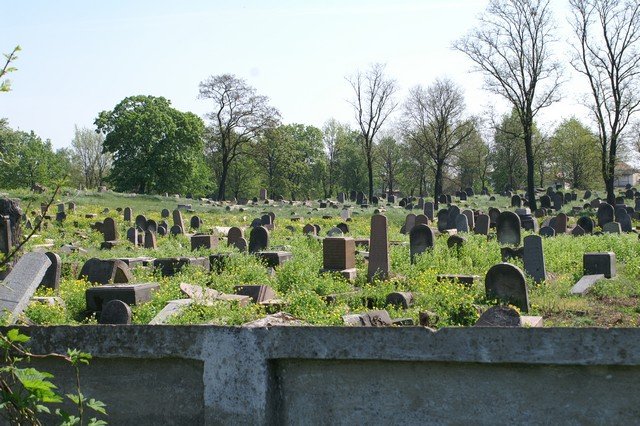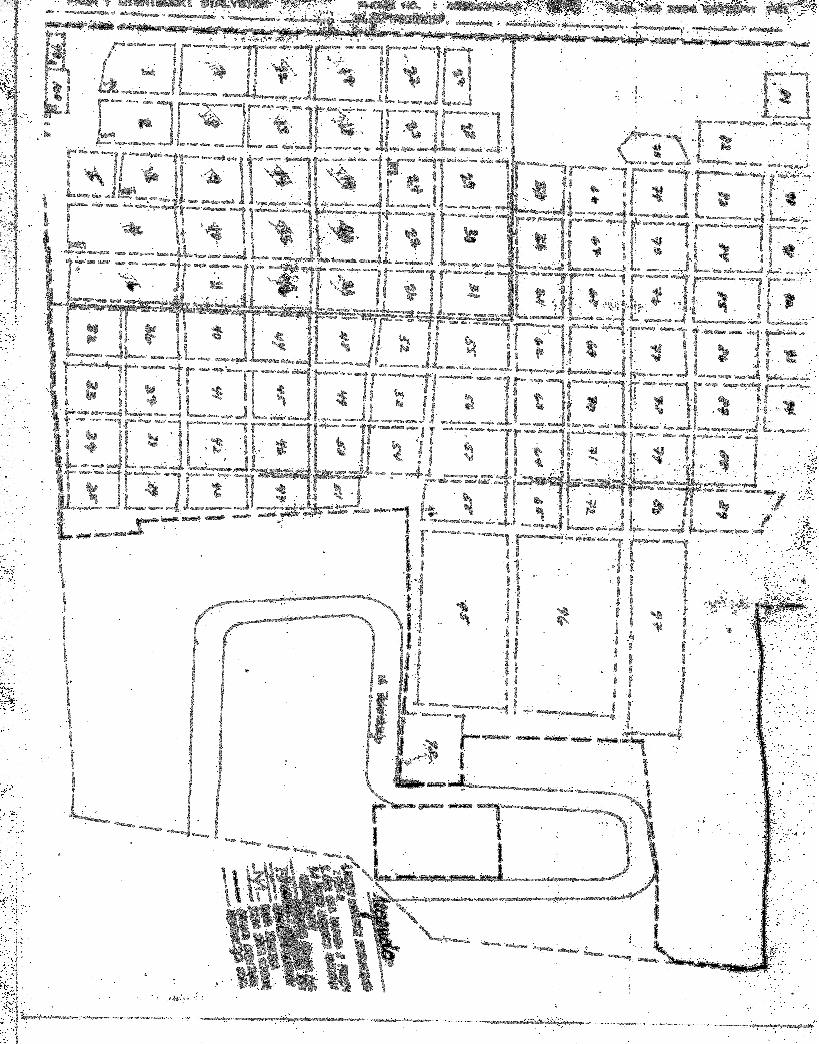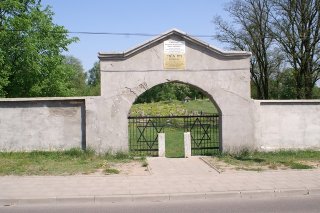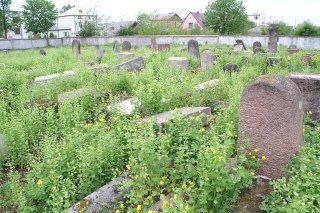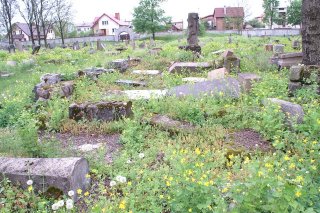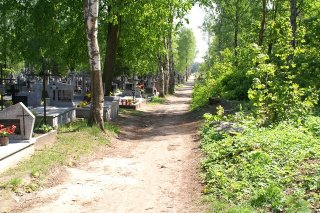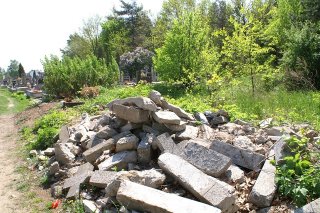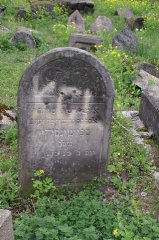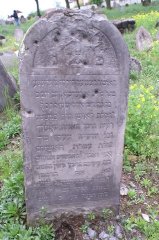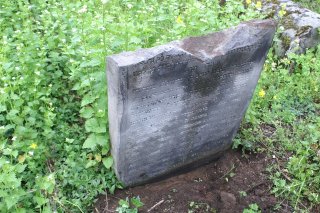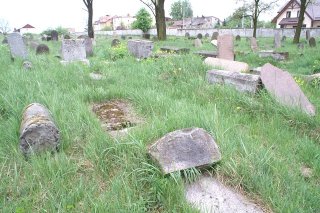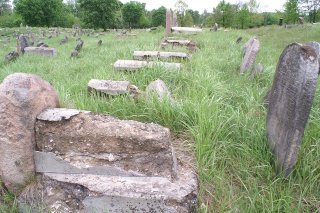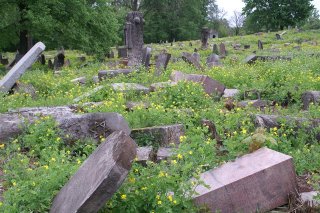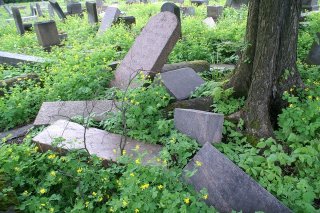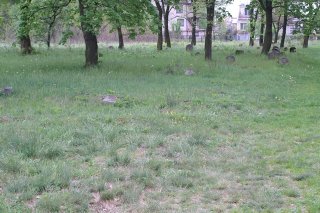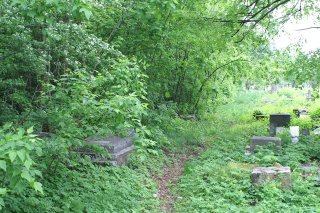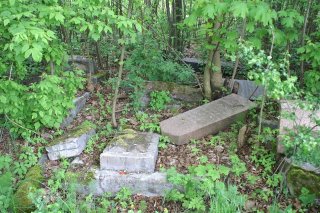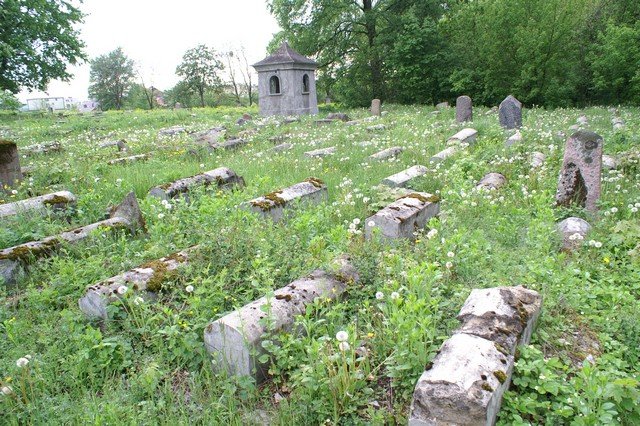BIALYGen
Bialystok Region Jewish Genealogy Group
GRODNO GUBERNIYA POLAND IMAGING PROJECT
SURVEY OF JEWISH CEMETERIES
by Heidi M. Szpek, Ph.D.
Associate Professor, Department of Philosophy and Religion Studies
Central Washington University
May 2007
Partial funding provided by: The Department of Philosophy & The Office of International Studies and Programs Grant Committee,
Central Washington University, Ellensburg, Washington 98926, USA
Back to Poland Imaging Project Cemeteries Index
|
Bagnowka (Białystok)
53°08'57.59"N 23°11'45.15"E Size: c.30 acres (urban location; 100 sections) Number of matzevoth: (1500-2000) 1266 were counted; 33 sections heavily-wooded could not be counted at time of survey; 1 Ohel; Memorial; numerous supports)Bagnowka.com: Bialystok-Bagnowka Gallery (photographed in 2005-2007)
Image 1
Directions: The Bagnowka Jewish cemetery is now located in the northeastern section of the city of Bialystok on Ul. Wschodnia. It can be reached from the city center (Ul. Lipowa) by taking Ul. Henryka Sienkiewicza northeast for about 1 km, which will become Ul. Wasilkowa as you near the underpass with highway 676. Continue on Ul. Wasilkowska for a few blocks. At the intersection with Ul. Lipca, the street will again change names to Ul. Władysława. Five blocks ahead at right (east) is Ul. Wschodnia. Direct access to Wschodnia appears to be permanently closed, so turn right immediately at the next street (W. Raginisa) and turn right again onto Ul. Odłegia. Ul. Wschodnia will be the first street at left. Travel on Wschodnia for about two blocks and the concrete walls and wrought-iron gates of Bagnowka cemetery will be on your left (north). Just before the cemetery grounds begin (on the west) is an open field that can be used for parking, at the back of which is access to the adjacent Catholic Cemetery.
Conditions: A concrete masonry wall runs along the western and southern (front) borders (Images 1-4); the front wall has two entrances with black wrought-iron gates, neither of which lock (Image 2). The eastern border is marked by a chain link fence, with some damaged sections. The back border (adjacent to the Catholic Cemetery is open (Image 5), with a few remaining sections of a brick wall. Various debris (garbage, used candle holders, etc) is scattered along the back edge, some debris inside, some outside the present cemetery border (Image 6). Various footpaths run from the front to back of the cemetery, clearly used as shortcuts to the Catholic cemetery or for dog walking. Some matzevoth and the ohel bear graffiti or indications of deliberate damage (Images 7-10). The largest concentration of matzevoth is found in the western sections immediately on entering (Images 1,11-14). All sections are in various states of disarray, meaning some matzevoth are in situ, though at times no longer standing erect, other have fallen, some broken. The 20 sections immediately entering at the eastern gate preserve approximately 10-30 matzevoth each (see diagram below for sections). Moving toward the center and back of the cemetery, numerous supports are still in situ (Images 12, 19). Those sections (22-23,27-28, 55-57, 59-63, 66-70, 73-78, 82-87) heavily wooded (small trees, brush, low vegetation) even in early May, are difficult to gain an accurate count (Images 16-18). In some sections (22-23, 27-28), matzevoth and supports are visible, often fallen upon each other. Other wooded sections toward the back (e.g. 74-78) are scarce in extant matzevoth.
Earlier site surveys (Gruber & Myers (1991-95); Wisniewski (1998) and personal communication with Wisniewski) reported that 5000-7000 matzevoth still remain. This total must drastically be reduced to at the most 2000. 1266 were counted in the sections not covered by woods and heavy vegetation. Walking through approximately 24 sections heavily wooded (and heavy with mosquitoes) indicated that in no way do these sections preserve hundreds, much less thousands of matzevoth. Numerous concrete support beams are found throughout most sections of the cemetery, prompting the query that these concrete supports might have been counted in the larger total. Note: Further documentation of Bagnowka Jewish Cemetery is planned by Szpek for June 2008.
The greatest threats, excluding vegetation and the natural climatic effects on matzevoth and the cemetery in general, would seem to be the danger of vandalism in many forms.
|
||||||||||||||||||||||||||||||||||||||||


